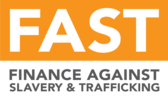Leverage is all about using influence in relationships to change outcomes. The force of finance lies in acting as a lever which can influence and move global business practice.
When a company is connected to modern slavery and human trafficking through its business relationships it is expected to use its leverage to seek to prevent or mitigate that harm and, where necessary, build additional leverage to achieve that result. Leverage will depend on highly specific contextual factors, such as the nature of a transaction or relationship, the financial actor’s share of financing, its control over the other entity’s management, dependency dynamics, and the financial sector’s own organizational profile. For example, general corporate lending creates different leverage dynamics to private equity ownership and active management; syndicated loans generate different dynamics to bilateral loans, and insurance coverage generates different dynamics to passive investment.
Leverage is a distinct concept and question from liability. The existence of liability is a legal question, the existence of leverage is not. And the expectation of building and using leverage is not an expectation of making companies uncompetitive – let alone condoning anti-competitive conduct.
We identify six distinct types of leverage, building on a typology first defined by Shift.
First, two bilateral types:
- traditional commercial leverage (through contract audits, bidding criteria, loan conditions, commercial incentives, questionnaires and financial incentives), and
- broader business leverage (such as capacity-building, awareness-raising and bilateral advocacy).
Next, there are two collaborative types of leverage:
- working with one or more business partners (such as creating shared industry supplier requirements), and
- working with one or more non-commercial partners (for example involving government, international organizations, trade unions or civil society).
Finally, there are two system-level types of leverage:
- multi-stakeholder cooperation to create ‘ecosystem’ change, and
- platform leverage, embedding anti-slavery and anti-trafficking in the business operating systems on which other market actors rely (such as payment systems, or industry-wide codes or contracting templates). There are already examples of innovation in this area, such as the action by payment systems providers to exclude com from their services, and the Brazilian Central Bank’s decision not to deal with companies found to have engaged slave labour.
The FAST Leverage Practice Matrix provides illustrative examples of each of these different types of leverage being used by financial sector actors, across different sub-sectors.
As one example of how leverage could be used, we look at the construction sector, responsible for around 18 per cent of estimated global forced labour. Here, financiers have significant leverage to embed anti-slavery and anti-trafficking measures, including cascading contractual clauses, contract management plans, and independent monitoring arrangements into deal and project agreements. Some of these techniques are now migrating to related areas, such as real estate management.
Other areas that may warrant close scrutiny and the development of specialized leverage guidance include insurance (e.g. through the United Nations Environment Programme [UNEP] Finance Initiative Principles for Sustainable Insurance), stock exchange management (the United Nations Sustainable Stock Exchanges Initiative), institutional investing (both active and passive) (through Principles for Responsible Investment) and trade finance (the International Chamber of Commerce Sustainable Trade Finance Initiative).
Leverage arrangements could also be embedded in enterprise technology, generating a stream of data about modern slavery risks and ESG performance that could be used to trigger micro-incentives (when defined milestones are met), or underpin dialogue about risk-reduction measures.
Ultimately, repeated efforts to build and use leverage in a business relationship may not succeed. At that point, financial sector actors may need to consider exiting from the business relationship, which may involve exclusion or divestment. This possibility is best announced upfront, during the formation of the business relationship – maximizing the resulting leverage throughout the relationship. But financial sector actors must also ensure that divestment and exclusion will not lead to increased modern slavery or human trafficking risks for people, for example because they lose their livelihoods and are forced into risky migration or labour practices. The aim of divestment must be to reduce risks to people, not just the business. And for that reason, exclusion and divestment should not be seen as necessarily final and permanent, but rather as one stage in a complex process of building and using trust and influence.
Finally, we need to increase reporting on and transparency in use of leverage. Without greater transparency on how leverage gets used, with what impact, it will not be possible for financial markets to connect individual enterprise behaviour with resulting risk. As a result, leverage practices will continue to not be factored into prices or costs of capital. Financial sector actors should consider how to benchmark and evaluate the leverage of their influence, to translate this into useable market information.


